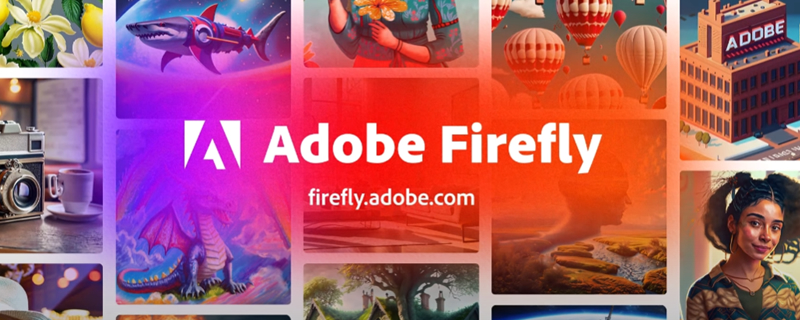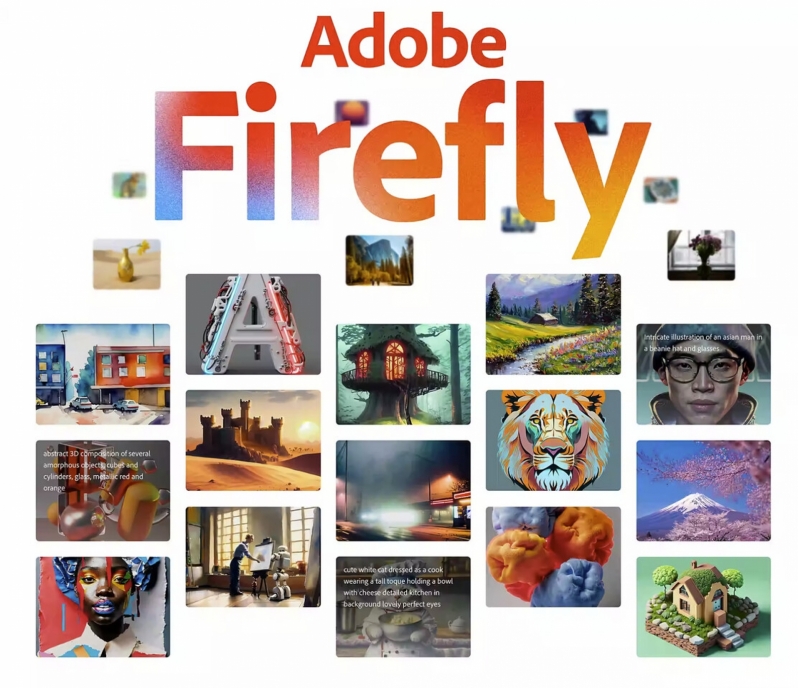Adobe reveals Firefly, a generative suite of creative AI tools
Adobe’s bringing generative AI tools to the creative masses with FireflyÂ
The AI revolution is here, and Adobe are ready to take advantage of the generative tools that it brings to the table. Today, Adobe has revealed Firefly, a new family of generative AI tools that can allow creatives to create content at the speed of imagination.Â
Adobe Firefly will start with the generation of images and text effects, but in time it will expect to ever wider amounts of content. Firefly will be available though the Adobe creative cloud and users will be able to use words to generate the content that they can dream up. Adobe has stated that Firefly will eventually cover images, audio, vectors, videos and 3D content, and that Firefly will be integrated into many of Adobe’s existing tools and services.Â
One of Adobe’s priorities with Firefly is that it can be used to generate images that are intended for commercial use. As such, Adobe’s AI models are “trained on Adobe Stock images, openly licensed content and public domain content where copyright has expired”. This makes Adobe’s AI generated content safe to use commercially, ensuring that generated content won’t utilise the IP of other brands or create images that will get users into copyright disputes.
With Firefly, Adobe wants to deliver generative AI to creators in a way that maximises its commercial usability by ensuring that their AI does not infringe on copyright by using unauthorised training images while increasing the usability of their creative tools by allowing users to create and edit images using text prompts.
A Customer-Centric Approach
Adobe has stated that they are designing their generative AI to support creators, allowing them to benefit more from their skills and creativity. Below is what Adobe had to say about their intent with Firefly and their plans to compensate Adobe Stock image contributors.Â
– Helping creators work more efficiently: Content is fueling the global economy and creativity and design have never been more valued. In a recent Adobe study 88% of brands said content demand at least doubled over the last year and two-thirds expect it to grow 5x over the next two years. Adobe is leveraging generative AI to ease this burden with solutions for working faster, smarter and with greater convenience – including the ability for customers to train Firefly with their own collateral, generating content in their personal style or brand language.
– Compensating creators: Adobe’s intent is to build generative AI in a way that enables customers to monetize their talents, much like Adobe has done with Adobe Stock and Behance. Adobe is developing a compensation model for Adobe Stock contributors and will share details once Firefly is out of beta.
– Advocating for open standards: Adobe founded the Content Authenticity Initiative (CAI) to create a global standard for trusted digital content attribution. With more than 900 members worldwide, the role of CAI has never been more important. Adobe is pushing for open industry standards using CAI’s open-source tools that are free and actively developed through the non-profit Coalition for Content Provenance and Authenticity (C2PA). These goals include a universal “Do Not Train” Content Credentials tag in the image’s Content Credential for creators to request that their content isn’t used to train models. The Content Credentials tag will remain associated with the content wherever it is used, published or stored. In addition, AI generated content will be tagged accordingly.
– Firefly ecosystem: Adobe is also planning to make Firefly available via APIs on various platforms to enable customers to integrate into custom workflows and automations.
If you want to learn more about Adobe Firefly, you can head over to Adobe’s Firefly webpage.
You can join the discussion on Adobe’s Firefly generative AI creative tools on the OC3D Forums.




